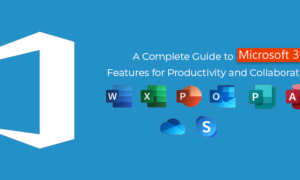Microsoft 365, the subscription-based productivity suite, is a favorite of companies globally for its excellent range of features and services. Users have access to core applications like Word, Excel, PowerPoint, Outlook, and others. In addition, they can utilize collaborative apps such as Teams, OneDrive, and SharePoint.
While many companies enjoy using M365, they don’t follow enough precautions to protect their data and their business.
One Microsoft Security Intelligence Report displays a significant spike in social engineering, cryptojacking and supply chain attacks.
To protect your data, employees, and clients from such threats, your organization must adopt the following measures:
1. Secure Your M365 Infrastructure Professionally
Work with a team of IT professionals to enhance your security. A renowned Microsoft Solutions partner like Softlanding can help secure your MS 365 infrastructure. They also help companies expertly incorporate, configure, and fully deploy Microsoft enterprise products as part of their excellent Microsoft 365 consulting services.
2. Enforce Complex Passwords
Hackers can leverage various techniques and technologies to guess weak passwords within seconds. For example, a simple password can be easily broken with a brute force or dictionary attack.
Set a company policy for strong passwords. Passwords should be eight to ten characters long and feature lowercase letters, uppercase letters, numbers, and symbols. Additionally, they must be devoid of common alphanumerical patterns.
Setting and remembering complex passwords can be challenging. However, a good password management tool can help your team set and keep track of sophisticated passwords.
3. Encourage Multi-Factor Authentication (MFA)
Your staff is human and human beings make mistakes. Passwords can be stolen. That’s why you must encourage employees to utilize MFA. With MFA, a hacker will have to authenticate their identity in another manner, even if they have the correct login credentials.
4. Mitigate the Risk of Ransomware Attacks
Ransomware is a type of devastating malware that can encrypt essential files, holding them hostage for an extortion fee. There’s no guarantee that your data will be restored even after you pay hackers after a dangerous cyber attack.
Fortunately, there are some policies and tools that can help mitigate the risk of a ransomware attack. For one, activate email filters that block attachments that may carry ransomware.
Please also teach your team to avoid opening suspicious emails that seem unfamiliar, carry spelling or grammatical errors, are sent from strange email addresses, have unusual requests, or utilize social engineering to create a sense of urgency.
Microsoft also offers an end-to-end backup and disaster recovery solution. This secure and scalable tool can be integrated with your on-premises data protection solutions and assist with recovery after data corruption.
5. Utilize Conditional Access
Take advantage of conditional access policies. With the right settings, only people with trusted devices from secure locations can access your assets.
6. Monitor for Suspicious Activity
You can use M365 tools to detect and respond to the following abnormal or suspicious behaviour:
- Exchange of sensitive data.
- Compliance violations.
- Unusual traffic.
- Unexpected logins.
Please also set up real-time alerts to learn about security incidents immediately.
7. Invest in Training
An alarming number of security incidents occur due to employee error. Threat actors nowadays use different types of social engineering attacks to manipulate company employees into making grave mistakes, such as sharing passwords or downloading malicious files.
Train your employees to be vigilant and improve cyber-hygiene. Utilize attack simulation training in Defender for 365 to run realistic attack scenarios on your organization. Simulating attacks will help your company recognize vulnerable users and improve their cybersecurity posture before an actual attack.
In addition to the seven tips listed above, regularly use Microsoft Secure Score to check your company’s security posture. With Microsoft Secure Score, you’ll get a number of important recommendations to shield your organization from different types of threats. Finally, keep your software up to date to plug any security vulnerabilities.



































